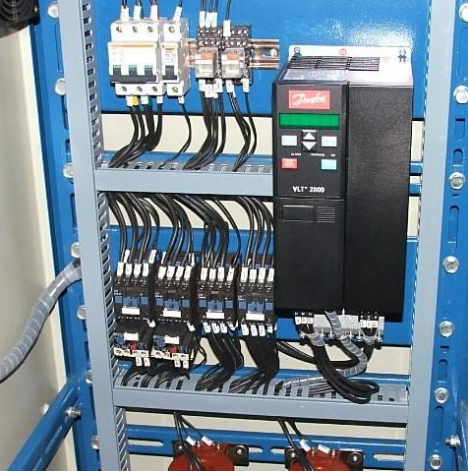The core problem of industrial control equipment is the anti-interference ability. If the anti-interference ability is not high enough, then this equipment is of little use.
To improve the anti-interference ability of industrial control equipment, the first thing is to learn to use plc correctly.

1. The core power supply of the PLC and the power supply of the input and output interface should be independent
Most users have only one power supply when designing a system power supply, which is used for the core and interface of the PLC. Those who understand the principle of optocoupler will find that this connection will bypass the optocoupler, that is to say, the optocoupler does not play a role in isolation at all, and the entire PLC is completely "naked" without any protection. Ability, very dangerous! The correct way is to add an extra power supply to only supply power to the PLC core. The input and output interfaces can share a power supply.
2. If the PLC output port is connected to inductive loads, such as solenoid valves, relays and other loads with coils, it is necessary to add an absorption diode to both ends of the load. For specific methods, you can check the wiring diagram of the product on our website
Without this reverse diode, a reverse electromotive force will be generated at the moment the solenoid valve or relay is disconnected. This back electromotive force, superimposed with the power supply of the output port, will greatly exceed the voltage endurance limit of the output transistor (or field effect tube), resulting in the breakdown of the transistor. For the parameters of the reverse diode, as long as the current is not less than the relay current, and the withstand voltage is not less than the interface power supply voltage, it is fine, like 1N4004, 1N4007, there is no problem. In addition, for solenoid valves on the market, if the wiring is marked with positive and negative poles, it means that there is an absorption circuit inside and no external diode is needed.
3. The choice of power supply
Interfering signals are all high-frequency signals. Typical sources of interference signals are frequency converters and thyristor voltage regulator circuits. Most of the power supplies on the market are switching power supplies with small size and high efficiency. However, the biggest disadvantage is that high-frequency interference signals can be driven directly in for a long time. In the old-fashioned power supply in the past, there was a large-volume transformer, which was large in size and low in efficiency, but it could effectively suppress high-frequency interference signals. Therefore, when choosing the core power supply, you should choose the old transformer power supply.
If you cannot find the old transformer power supply, you can connect a 1:1 isolation transformer before the switching power supply, or connect a common mode coil to the input end of the core power supply to block high-frequency interference.
4. Layout
There are two ways of interference, one is wire conduction, and the other is space radiation conduction. The above 1 and 3 can solve the interference of wire conduction. The most effective way to deal with space interference is to add a shielding cover (do not think that adding a shielding cover is optional). The power distribution cabinet is a good shield. However, the shield is helpless against interference from the inside. Since relays and even contactors are generally installed in the power distribution cabinet, a high-frequency interference will occur at the moment the relay is disconnected. This interference will radiate through space and interfere with the operation of the PLC. At this time, it is necessary to have certain requirements on the internal layout of the power distribution cabinet. The PLC should be as far away as possible from the relay and the high-current cables controlled by the relay to reduce the space radiation interference. If the interference is still serious, you can consider wrapping the PLC with tin foil, which is equivalent to adding a separate shield to the PLC.
After reading the above content, some equipment engineers will have doubts: "I have done this (didn't follow the above requirements) for decades, and there is no problem." Although the equipment is working, it is not the most In good condition, it belongs to "work with illness".
Top Plug,Top Plug In,Standard Power Conversion Plug,Power Conversion Plug
WENZHOU TENGCAI ELECTRIC CO.,LTD , https://www.tengcaielectric.com
